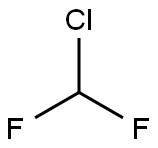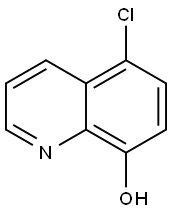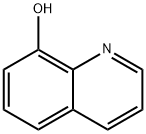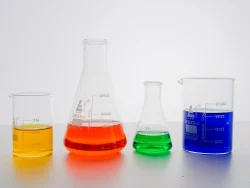Clioquinol
Synonym(s):5-Chloro-7-iodo-8-hydroxyquinoline;5-Chloro-7-iodo-8-quinolinol;5-Chloro-8-hydroxy-7-iodoquinoline;Clioquinol;Iodochlorhydroxyquin
- CAS NO.:130-26-7
- Empirical Formula: C9H5ClINO
- Molecular Weight: 305.5
- MDL number: MFCD00006787
- EINECS: 204-984-4
- SAFETY DATA SHEET (SDS)
- Update Date: 2025-12-11 08:41:34

What is Clioquinol?
Absorption
Topical absorption is rapid and extensive, especially when the skin is covered with an occlusive dressing or if the medication is applied to extensive or eroded areas of the skin. Clioquinol is absorbed through the skin in sufficient amounts to affect thyroid function tests.
Chemical properties
Almost white, light yellow, brownish-yellow or yellowish-grey powder.
Originator
Clioquinol,CIBA-GEIGY Corp.
The Uses of Clioquinol
Clioquinol is used as an anti-infective agent; antiamoebic agent; intravaginal trichomonacide; used to impregnate cotton bandages for antibacterial purposes; in animals as an intestinal anti-infective agent.
The Uses of Clioquinol
alpha adrenergic blocker, mydriatic, antidepressant
The Uses of Clioquinol
Used as a topical antifungal treatment
Background
Clioquinol was withdrawn in 1983 due to neurotoxicity.
What are the applications of Application
Clioquinol is a metal chelating ligand that inhibits certain enzymes related to DNA replication
Indications
Used as a topical antifungal treatment.
Definition
ChEBI: A monohydroxyquinoline that is quinolin-8-ol in which the hydrogens at positions 5 and 7 are replaced by chlorine and iodine, respectively. It has antibacterial and atifungal properties, and is used in creams for the treatment of skin infections. It has al o been investigated as a chelator of copper and zinc ions for the possible treatment of Alzheimer's disease.
Indications
Iodochlorhydroxyquin (Clioquinol), containing 40% iodine, was originally developed as a substitute for iodoform as an antiseptic dusting powder. Although its most effective use is in the treatment of amebiasis, it also has mild antibacterial and antifungal effects and may be used alone or with steroids in the treatment of eczematous and impetiginized processes and some dermatophyte, yeast, and Trichomonas infections. However, more specific agents are available. Because of neurotoxicity, the oral form of this drug has been withdrawn in the United States. A recent study demonstrating significant percutaneous absorption when applied to intact human skin raises concern regarding its topical use as well. The medication may stain the skin, hair, and clothing yellow and may induce contact allergy.
Manufacturing Process
Chlor-5-oxy-8-chinoline (18 kg) was mixed with potassium hydroxide (6.0 kg),
water (400 kg) and heated. To this solution 50 L saturated aqueous solution of
potassium iodide (16.6 kg) was added, mixed and continued to heat. Solution
was filtered at room temperature. Then to this yellow solution the solution of
chloride of lime and 50 kg 5% solution of were added then all this was mixed
and allowed to stand for 24 h
.
After eliminating of free iodine by addition of sodium thiosulfate the obtained
precipitate was washed with water. To residue 1% solution of acidum
hydrochloricum (50.0 kg) and rapidly was heated to 50°C. Then it was washed
with water and dried, so 5-chloro-7-iodo-quinolinol-8 was obtained, melting
point 170°-175°C.
brand name
Domeform-HC (Bayer); Quin-O-Creme (Marion Merrell Dow); Rheaform Boluses [Veterinary] (Fort Dodge Animal Health); Vioform (Ciba-Geigy);Amebio-formo;Anterobe;Aristoform "d";Aristoform "r";Barquinol hc;Betnorate-c;Britaderm;Britadex-vioform;Carboform;Cloro-yodo-hidroxi;Clorpine;Combias;Copover;Cortex;Corti-glottyl;Dependal;Dermo-quinol;Dermozolan;Dexalocal;Diaban;Dioderm c-c;Diodotracin;Dizenterol;Enteral;Ente-rivo;Enterokin;Enterosan;Entero-valodon;Entero-vioformo;Enterquinol;Entox;Entrasorb;Entrokinol;Fusalor-yodocloro;Fyloxxal;Gmd;Guanosept;Haelan-c;Hocacorten-vioform;Hydroform;Iodo-cortifair;Iodocortindon;Iodo-max;Isoderm;Khlorlinkotsin;Klinicin;Lecortin;Lederform-d;Lemoderm;Linola;Locorten-vioform;Metrijet;Metrityl;Mexafermento;Mexafom;Nasello;Nefurox;Obstecrim;Pedi-cort;Percural;Phen-ortis;Pricort cream;Propaderm-c;Quadriderm;Quin iii;Quina band;Quiniodochlor;Reticus;Sebryl;Sedacol;Septo-canulase;Silic c;Tequinophil;Toptic;Torofor;Unidiarea;Uteroject;Ventribex;Viform;Vioform bolus;Vioform hydrocortisan;Vioform hydrocortisone;Vioforme.
Therapeutic Function
Antibacterial
World Health Organization (WHO)
Clioquinol, a halogenated hydroxyquinoline derivative, was introduced into medicine around 1900 as a topical antiseptic and in 1934 oral preparations for the treatment of amoebic dysentery and simple diarrhoea became available. By 1964 its use in Japan had been associated with cases of sub-acute myelo-optic neuropathy (SMON) which reached epidemic proportions resulting in its withdrawal there in 1970. Although relatively few cases of SMON were documented elsewhere, clioquinol was subsequently withdrawn from use in many countries and placed under prescription control in others. It was phased out worldwide by the major manufacturer between 1983 and 1985 on grounds of obsolescence. No adequately controlled evidence was ever generated to demonstrate that clioquinol is effective in bacterial or viral diarrhoea. However, products containing clioquinol and related halogenated hydroxyquinolines continue to be used in some tropical and subtropical countries where amoebiasis remains endemic. Other amoebocides are preferred in the WHO Model List of Essential Drugs. (Reference: (WHODI) WHO Drug Information, 77.1, 9, 1977)
General Description
Cream-colored to brownish-yellow powder. Practically odorless. Decomposes at 178-179°C. Used as a topical anti-infective.
Air & Water Reactions
Insoluble in water.
Reactivity Profile
Clioquinol is incompatible with strong oxidizing agents, strong acids, acid chlorides and acid anhydrides . Darkens on exposure to light.
Fire Hazard
Flash point data for Clioquinol are not available; however, Clioquinol is probably combustible.
Flammability and Explosibility
Non flammable
Pharmacokinetics
Clioquinol is a broad-spectrum antibacterial with antifungal properties. Application of clioquinol to extensive or eroded areas of the skin may lead to increased protein-bound iodine (PBI) levels within 1 week. In addition, elevated PBI levels may occur when relatively small areas of the skin are treated with clioquinol for more than 1 week.
Clinical Use
5-Chloro-7-iodo-8-quinolinol, 5-chloro8-hydroxy-7-iodoquinoline, or iodochlorhydroxyquin (Vioform) occursas a spongy, light-sensitive, yellowish white powder that isinsoluble in water. Vioform was initially used as a substitutefor iodoform in the belief that it released iodine in the tissues.It has been used as a powder for many skin conditions,such as atopic dermatitis, eczema, psoriasis, and impetigo.A 3% ointment or cream has been used vaginally as a treatmentfor Trichomonas vaginalis vaginitis. The best use forVioform is in the topical treatment of fungal infections suchas athlete’s foot and jock itch. A combination with hydrocortisone(Vioform HC) is also available.
Safety Profile
Poison by ingestion. Moderately toxic by intraperitoneal route. Human systemic effects by ingestion: change in central nervous system electrical function, optic nerve damage, and changes in vision. Experimental teratogenic and reproductive effects. Human mutation data reported. When heated to decomposition it emits very toxic fumes of Cl-, I-, and NOx.
Metabolism
Not Available
Purification Methods
It crystallises from AcOH or xylene and dry it at 70o in vacuo.[Beilstein 21 III/IV 1190.]
Properties of Clioquinol
| Melting point: | 175-183 °C |
| Boiling point: | 350.4±37.0 °C(Predicted) |
| Density | 1.8959 (estimate) |
| vapor pressure | 0Pa at 25℃ |
| storage temp. | 2-8°C |
| solubility | Soluble in DMSO (>25 mg/ml), boiling alcohol ((1:43)), methanol, and chloroform ((1:120)). |
| pka | pKa 8.12(50%aqEtOH t=35.0±0.1 I=0.00 N2atmosphere)(Approximate) |
| form | Solid |
| color | Light Beige to Beige |
| Water Solubility | <0.1 g/100 mL at 20 ºC |
| Merck | 14,5031 |
| BRN | 153637 |
| CAS DataBase Reference | 130-26-7(CAS DataBase Reference) |
| NIST Chemistry Reference | 5-Chloro-7-iodo-8-quinolinol(130-26-7) |
| EPA Substance Registry System | Clioquinol (130-26-7) |
Safety information for Clioquinol
| Signal word | Danger |
| Pictogram(s) |
 Skull and Crossbones Acute Toxicity GHS06 |
| GHS Hazard Statements |
H301:Acute toxicity,oral H315:Skin corrosion/irritation H317:Sensitisation, Skin H319:Serious eye damage/eye irritation |
| Precautionary Statement Codes |
P261:Avoid breathing dust/fume/gas/mist/vapours/spray. P264:Wash hands thoroughly after handling. P264:Wash skin thouroughly after handling. P280:Wear protective gloves/protective clothing/eye protection/face protection. P301+P310:IF SWALLOWED: Immediately call a POISON CENTER or doctor/physician. P302+P352:IF ON SKIN: wash with plenty of soap and water. P305+P351+P338:IF IN EYES: Rinse cautiously with water for several minutes. Remove contact lenses, if present and easy to do. Continuerinsing. |
Computed Descriptors for Clioquinol
Clioquinol manufacturer
New Products
4,4-Difluoropiperidine hydrochloride tert-butyl 9-methoxy-3-azaspiro[5.5]undecane-3-carboxylate Indole Methyl Resin N-Isopropylurea N,N-Dicyclohexylcarbodiimide(DCC) MELDRUMS ACID 5-METHYLISOXAZOLE-4-CARBOXYLIC ACID Magnessium Bis glycinate Zinc ascorbate 1-bromo-2-butyne 2-acetamidophenol 9(10H)-anthracenone Erythrosin B, 4-Piperidinopiperidine 2-((4-morpholinophenylamino) (methylthio) methylene) malononitrile 2,4-dihydroxybenzaldehyde 3-(4-morpholinophenylamino)-5-amino-1H-pyrazole-4-carbonitrile Methyl 2-methylquinoline-6-carboxylate 2,6-dichloro-4-nitropyridine 4-Bromo-2-chlorobenzonitrile 2-(benzylamino)acetic acid hydrochloride 4-(tert-Butoxycarbonylamino)but- 2-ynoic acid 3,4-dihydro-2H-benzo[b][1,4]dioxepine 1-Phenyl-1-cycloprppanecarboxylicacidRelated products of tetrahydrofuran








You may like
-
 130-26-7 Clioquinol 99%View Details
130-26-7 Clioquinol 99%View Details
130-26-7 -
 Clioquinol 130-26-7 98%View Details
Clioquinol 130-26-7 98%View Details
130-26-7 -
 Clioquinol 98%View Details
Clioquinol 98%View Details
130-26-7 -
 5-Chloro-8-hydroxy-7-iodoquinoline CAS 130-26-7View Details
5-Chloro-8-hydroxy-7-iodoquinoline CAS 130-26-7View Details
130-26-7 -
 Clioquinol CAS 130-26-7View Details
Clioquinol CAS 130-26-7View Details
130-26-7 -
 Clioquinol - API, Greater than 99%View Details
Clioquinol - API, Greater than 99%View Details
130-26-7 -
 5-Chloro-8-Hydroxy-7-IodoquinolineView Details
5-Chloro-8-Hydroxy-7-IodoquinolineView Details
130-26-7 -
 130-26-7 98+View Details
130-26-7 98+View Details
130-26-7
